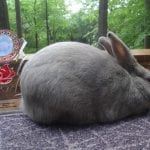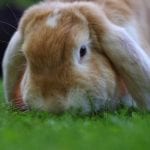Scientific Facts
| Common Name: | Hulstlander Rabbit |
| Life Span: | 8-10 years |
| Size: | Small to Medium |
| Country of Origin: | Netherlands |
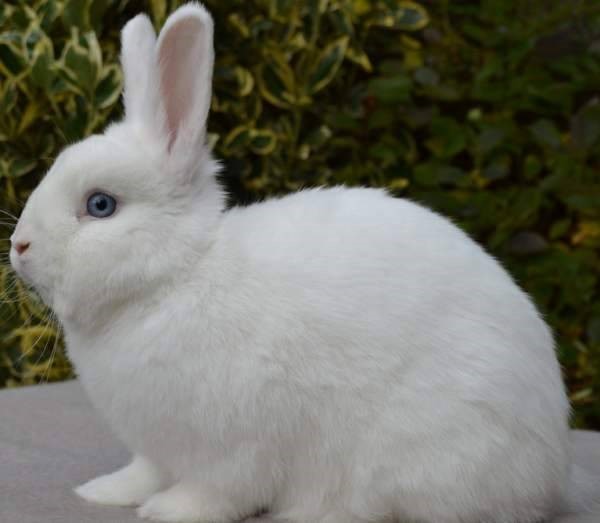
Physical Description
Hulstlander Rabbits have short and solid bodies. They have developed front legs and hindquarters. Further, you will notice their front legs to be short and solid, too. In general, their entire body is enclosed with compact muscles. Checking the head of these creatures, you will notice that they are short, broad, firmly developed. They have bright, clear, and cheerful eyes. Their eyes are wonderfully shaded with blue rather than pink. They have huge and thick ears, and they must be expansive in “V” shape. You will also notice that their ears are held upstanding, be well coated with fur, and emphasize circular tips. The ears have a length that is between 3 to 4 inches. Their weight is roughly 5 to 6 pounds.
These rabbits give prominence to an average length coat, which is compressed and glossy. They also accentuate a massive undercoat and curtailed guard hairs. In general, the coat appears to carry a shimmer. The surface looks smooth and gleaming. No molt or matting should be observed, and no guard hairs should be extravagantly bulging from the coat.
The fur of Hustlander Rabbits is white and has no fragments of ivory or yellow anywhere in their bodies. Their nails are colorless.
Lifespan
Hulstlander Rabbits have an average lifespan of 8 to 10 years. However, the lives of these creatures still entirely rely on their current environment and the kind of care granted in them.
Eating Habits
Hulstlander Rabbits are known to be herbivores, and they are fond of eating hay, vegetables, and pellets. Hay is essential to the diet of these rabbits because it plays an important role in both dental and digestive health.
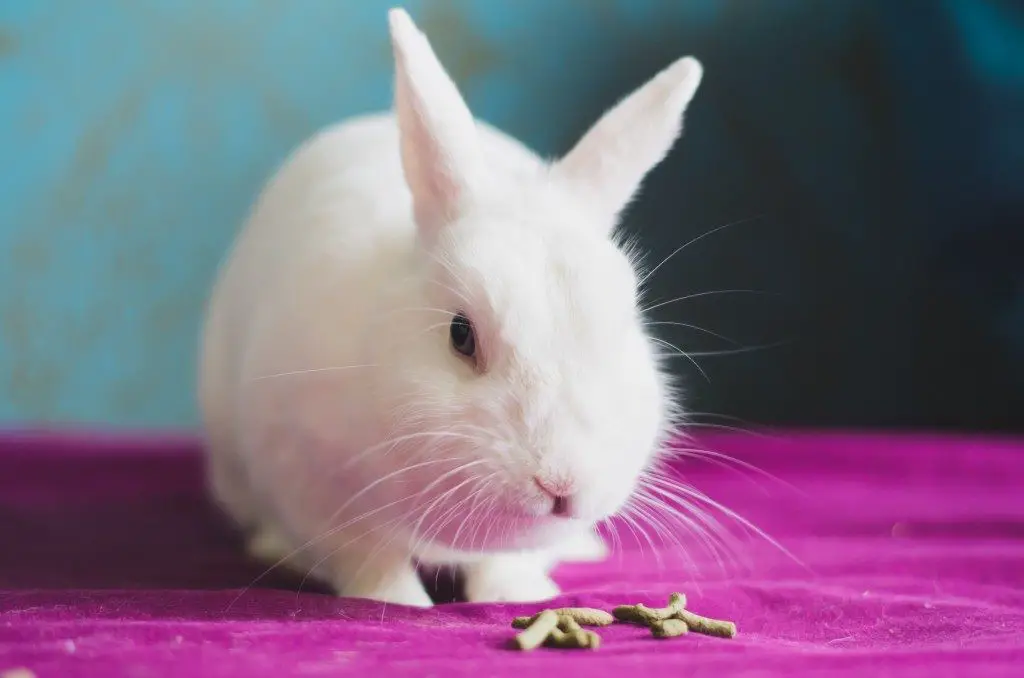
Sleeping Habits
Hulstlander Rabbits have cute habits in sleeping. You will notice these creatures to be sleeping relatively lengthy in the daytime while they periodically wake up during night-time. You should know that these creatures are prey animals. They have to be always alert for risks and dangers; hence, they sleep shorter and lighter compared to humans.
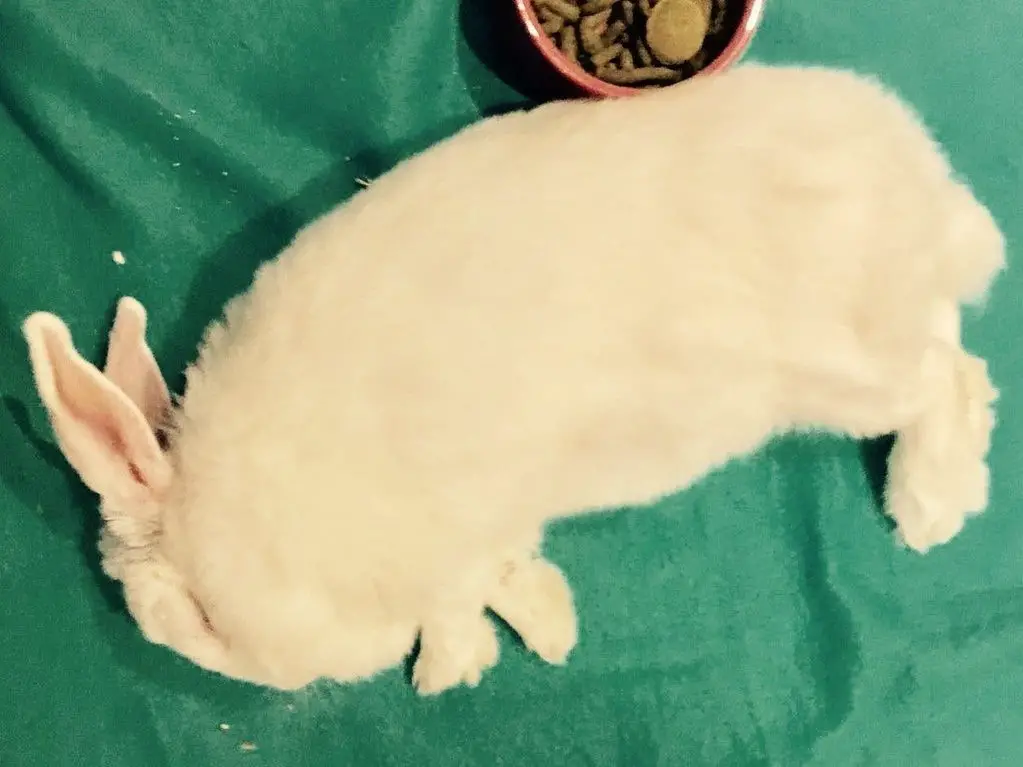
Development and Reproduction
Hulstlander Rabbits become sexually mature at 4 to 5 months. During the sexual interaction of the male and female rabbits, the latter releases eggs. Their pregnancy commonly ends on the 33rd day. The kits are born to be helpless because they are deaf, blind, and naked.
How to Breed
Determining the Sexes
Determining the sex of a Hulstlander Rabbit is easy because it can be discerned through physical inspection. Male rabbits have a penis that appears in tubular protuberance. You will also observe the testicles positioned on the side and a bit cranial to the penis. Female rabbits, on the other hand, have punk protuberance; however, the protuberance is oblique, more elliptical, and portrays a slit against a limited round opening.
Courtship and Mating
Rabbits of both sexes can be territorial. Mating is ideally done if the doe is put in the enclosure of the buck. During the introduction, the buck is noticed to be following around the doe, while gently buzzing while licking the female. Mating occurs once the male holds the female in the nape through the use of his teeth. The male mounts on the female and passionately thrusting until ejaculation happens.
Common Health Problems
Because Hulstlander Rabbits are hybrid, they are commonly known to be healthy animals. Nevertheless, these animals can still become susceptible to certain situations that normally affect rabbits.
Similar to other little mammals, these creatures can be vulnerable to viral infections and colds. Being exposed to draft, stress, and abrupt alterations in temperature may reduce the resistance of the rabbit to illnesses. Moreover, these animals are also susceptible to ear mites and conjunctivitis. Intestinal diseases such as hairball obstructions, bloat, and coccidiosis are also rampant among Hulstlander Rabbits.
Preventing Illnesses
If your pet is spending time outdoors, you should regularly treat your rabbit of fleas, ticks, and worms. You may also do a discussion with your veterinarian about vaccinating your rabbit against illnesses such as Viral Haemorrhagic Disease (VHD) or myxomatosis. Make sure to regularly inspect the teeth of your rabbit to be sure that they are not overgrowing. Securing your rabbit with chew toys made for rabbits shall help the teeth at a suitable length. Giving your rabbit fibrous vegetables shall also help your pet.
Also, you must remember that overweight rabbits will not find it easy to tend themselves, and that may result in flystrike. Feeding your rabbit, the appropriate diet will also guarantee that your rabbit does not get overweight.
Behavior
Hulstlander Rabbits have distinct and active personalities and may develop an intimate and amicable relationship with their handlers. They are characterized to be friendly, specifically if they are given plenty of time by their human family. They can be a little impudent. They are very curious, intelligent, loving, and playful. They love it every time their heads are stroked. They love it a lot if they are given special attention. A lot of these creatures can be taught to use a litterbox. Many of them will come near if called through their names. Buckled with the fact that these rabbits are naturally quiet, need comparably limited space, and very minimal odor, it is not difficult to notice why these rabbits have been so popular in Great Britain and the United States.
These creatures are also pleasant to watch because they have this behavior of standing up through their hind legs to sniff out; however, they also incline falling over. If these pets are managed during their young age, these animals grow calm and confident, and they rapidly learn. These animals grow up to be affectionate and outgoing, and they are anxious to probe. Nevertheless, you have to know that these rabbits can be a little hostile or sectional sometimes, specifically if not managed properly or not often handled. It is important to understand that these creatures require companionship. Thus, it is not advisable to leave them without a company for an extensive period.
Habitat
Enclosure
Husltlander Rabbits can be housed indoors; however, you should be ready with a completely rabbit-proof space, since these creatures are curious and love to delve into all nooks and openings that they can search. Owners may also allow their pets to spend time outdoors as long they have a safe garden venue where the rabbit can enjoy the sunshine and get fresh air. If you intend to house your rabbit outdoors, make sure to offer your pet a secure and safe outdoor hutch that is spacious. It should be weatherproof and be kept clean.
If housed in a cage, the rabbit should be placed in an enclosure that has a size that is five times the rabbit’s size, with a lot of space to stand upright and stretch. Owners should avoid using wire mesh flooring since it can be destructive and painful to the feet of the rabbit. There should be sleeping quarters where the rabbit can retreat if it feels resting or sleeping.
Toys
Baby toys, as well as fascinating kinds of stuff, must be accessible for entertainment. Rabbits need toys for mental stimulation. They also need to keep themselves busy playing with interesting toys to exercise their bodies.
Diet
Hulstlander Rabbits should be fed with high-fiber diets, which are composed of a diversified group of superior quality hays and pellets that are specifically formulated for rabbits. These rabbits should also be given with an array of stringy vegetables. These creatures can also be given some treats, such as some fruits. Lastly, it is also important that these rabbits get easy access to fresh and clean water.
How to Care for Hulstlander Rabbit
Hulstlander Rabbits need attention, as well as the time of their owners. They are very interactive. They will be melancholic if they are restricted to a cage with only minimal interaction. They require sufficient space and time to explore and exercise. Owners have to ensure that space is rabbit-proof against gnawing and nibbling. These rabbits need a commitment from their owners. They will also need random veterinary care.
Availability – Where to Get One?
If you are planning to get a Hustlander Rabbit, then make sure to find a reliable seller. Although there are plenty of choices available out there when wanting to buy this adorable pet. However, if you do not want to be bothered with some health issues that can be adapted by your pet, make sure to buy from a trusted and credible seller. You may check on some rabbit breeders. Pet stores may also sell these animals, but you have to be very particular with the physical condition of the animals coming from there.
FAQs
Are Hustlander Rabbits ideal for kids?
Hulstlander Rabbits are not ideally recommended for kids. Although these animals are known to be cute and cuddly, they can get easily frightened and stressed around activities and extreme noises. A lot of pets are not pleased being cuddled or handled and may kick or bite to escape.
How can I ensure good health in my Hulstlander Rabbit?
Apply proper care to your pet. A proper diet plays an important role in keeping your pet healthy. Feed your rabbit with nutritious foods. Also, give your rabbit some time to exercise.
